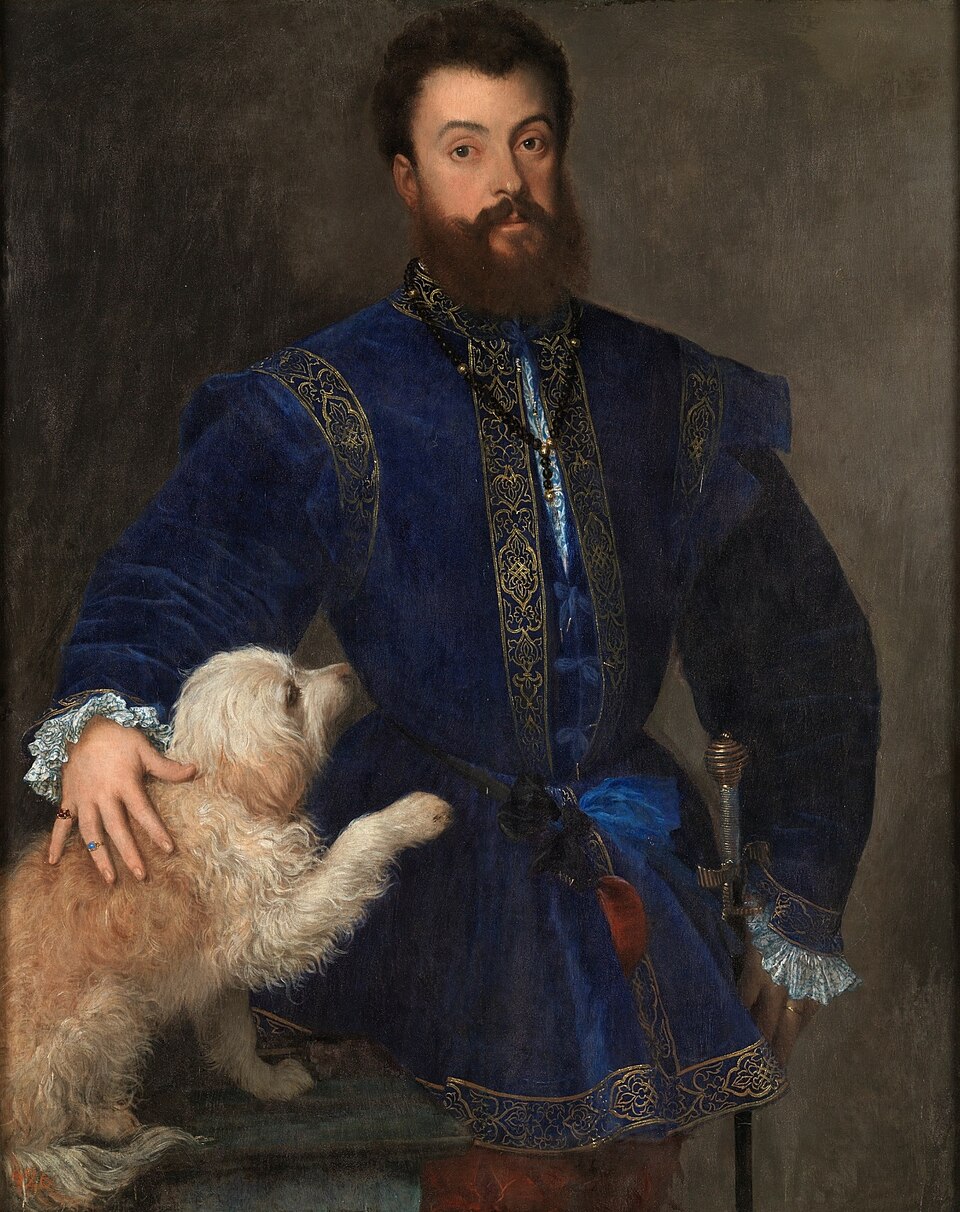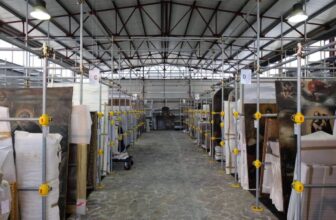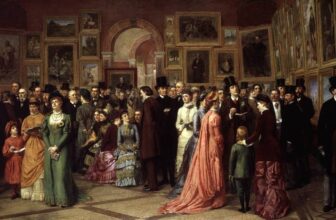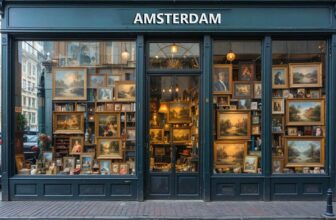
Meaning of Portrait of Federico II Gonzaga by Titian
The “Portrait of Federico II Gonzaga”, painted by Titian around 1529, is a quintessential representation of Renaissance portraiture. Housed today in the Museo del Prado in Madrid, this painting is not only a vivid likeness of one of Italy’s most powerful dukes of the 16th century but also a profound statement on power, identity, and the psychology of rulership. With layers of symbolism, stylistic elegance, and political undertones, Titian’s work exemplifies the height of High Renaissance art while offering a detailed look at the aspirations and image cultivation of Renaissance nobility.
Historical and Biographical Context
To understand the “Portrait of Federico II Gonzaga,” one must first understand the man behind the image. Federico II Gonzaga (1500–1540) was the Duke of Mantua, a small but culturally vibrant Italian state. A scion of the powerful Gonzaga family, Federico was deeply embedded in the political and artistic milieu of Renaissance Italy. The Gonzagas were renowned patrons of the arts and had longstanding ties with artists like Andrea Mantegna and later Giulio Romano.
Federico ascended to power at a time when Italy was politically fragmented and frequently subject to foreign influence, especially from France and the Holy Roman Empire. Federico was politically astute, aligning himself strategically with Emperor Charles V, who rewarded him with the ducal title in 1530. His rule was characterized by political maneuvering, military leadership, and an active patronage of the arts.
Titian: The Artist Behind the Portrait
Tiziano Vecellio, known as Titian (c. 1488–1576), was the leading painter of the Venetian school and one of the most influential artists of the High Renaissance. By the time he painted Federico II, Titian was already a sought-after portraitist with a growing reputation among Europe’s nobility. His approach combined naturalism, subtle psychological insight, and a command of color and light that set new standards in portraiture.
Titian’s relationship with Federico II likely stemmed from Federico’s broader connections with the Venetian Republic and his ties to Emperor Charles V, who was also Titian’s patron. The portrait, therefore, can be seen as part of a larger campaign by Federico to shape his image across Europe’s courts, utilizing art as a vehicle for diplomacy and personal branding.
What Is Happening in the Portrait?
At first glance, the Portrait of Federico II Gonzaga appears deceptively simple. The subject is shown in three-quarter length, turned slightly to his left, gazing outward with a cool, detached expression. He is richly dressed, wearing a sumptuous black-and-gold doublet, ornamented with gold buttons and intricate embroidery, visual evidence of wealth, power, and refined taste. A small a white Maltese dog, rests beside him or in his lap, introducing an element of gentle intimacy and subtle symbolism.
There is no elaborate setting, no throne, no battlefield, no courtly accoutrements, but the background is rich with atmospheric tonalities, emphasizing the sitter’s presence. Federico’s expression is controlled, almost aloof. His pose is assertive but not aggressive. The calm authority he exudes is typical of Titian’s aristocratic portraits: the sitter dominates the space not by dramatic gesture, but by self-assured presence.
Symbolism and Meaning in the Portrait
Despite its outward simplicity, the painting is saturated with symbolism. Every element in the portrait is carefully chosen to reinforce Federico’s desired identity as a ruler of poise, culture, and power.
1. The Dog: Loyalty and Status
Perhaps the most immediately noticeable symbolic element is the small white dog. Dogs were a frequent motif in Renaissance portraiture, symbolizing loyalty, fidelity, and in aristocratic contexts, elite status. This specific breed, a lapdog, is closely associated with the nobility and leisure, suggesting Federico’s elevated station and refined tastes. The dog’s relaxed demeanor mirrors the sitter’s composure, reinforcing a sense of control and harmony.
2. Clothing and Ornamentation
Federico’s attire is a bold statement of his social position and taste. Black was an expensive dye in the Renaissance, symbolizing wealth and dignity. The gold embroidery and buttons reflect not only opulence but also militaristic authority, suggesting Federico’s dual role as a cultured courtier and a military commander. His doublet’s structure accentuates his torso, subtly referencing strength and discipline.
3. Pose and Gaze
Titian masterfully captures a pose that radiates authority without ostentation. Federico’s hand rests casually, yet firmly, assertive but not theatrical. His gaze, steady and direct, meets the viewer’s with an intensity that implies confidence and command. This psychological depth is a hallmark of Titian’s portraiture, revealing not just the sitter’s physical likeness, but his inner world and aspirations.
4. Absence of Specific Setting
The neutral background emphasizes timelessness and universality. By not anchoring the figure in a particular locale, Titian elevates Federico beyond his temporal and geographical constraints. He becomes not just Duke of Mantua, but a universal archetype of ideal Renaissance rulership.
Artistic Style and Technique
The painting is a prime example of High Renaissance portraiture, with Venetian characteristics. Titian employs oil on canvas, which was a relatively new medium at the time, offering greater flexibility and subtlety than the previously dominant tempera. His brushwork is fluid, particularly in the rendering of fabrics and flesh tones. The modeling of Federico’s face is particularly masterful, combining fine detail with soft, atmospheric shading (a technique known as sfumato).
Unlike Florentine painters who emphasized line and clarity, Venetian painters like Titian prioritized color, light, and texture. The warm, golden highlights and the interplay between the dark doublet and pale skin create a luminous effect, drawing the viewer’s attention to the sitter’s face and hands, key areas of expression and identity.
The overall composition is tightly controlled, with careful balance between mass and void, color and shadow. There’s a restraint in ornamentation that suggests not lack of ambition, but a mature understanding of visual rhetoric.
Psychological Insight and Portraiture
One of the most striking features of the portrait is its psychological realism. Titian does not idealize Federico, nor does he caricature him. Instead, he presents a man of real presence, confident in his power but not overreaching. There’s a coolness in Federico’s eyes that may hint at his calculating political mind. This is no youthful princeling or romantic hero; it’s a statesman who understands the responsibilities of leadership.
This psychological complexity anticipates the later Baroque approach to portraiture, where the inner life of the sitter becomes a central theme. In many ways, Titian was ahead of his time, offering a nuanced portrayal that serves both as personal likeness and political image.
The Purpose and Function of the Portrait
In Renaissance courts, portraits were not mere decorations; they were tools of diplomacy, propaganda, and legacy-building. This portrait would have been intended to circulate, or at least to be seen, within the European nobility, reinforcing Federico’s image as a stable, respectable, and powerful leader aligned with Emperor Charles V.
By commissioning Titian, Federico signaled his alignment with the most sophisticated artistic trends of the day. In doing so, he elevated not just his personal image, but also the prestige of Mantua. The painting served both public and private functions: as a representation of ideal governance for foreign dignitaries, and as a personal legacy for posterity.
Reception and Legacy
Art historians have long admired the “Portrait of Federico II Gonzaga” for its elegant synthesis of realism and idealism. The painting stands as a defining example of Titian’s mature style, balancing technical mastery with human insight. It also marks a transition in portraiture, from decorative likeness to deeply personal, almost psychological representations of power.
The portrait has influenced generations of artists, from Van Dyck to Velázquez, who studied Titian’s handling of color and character. Federico’s controlled expression and composed posture became a model for aristocratic portraiture across Europe, establishing a visual grammar that would last well into the 18th century.
Where Is the Portrait Portrait of Federico II Gonzaga Today?
The “Portrait of Federico II Gonzaga” is currently housed in the Museo del Prado in Madrid, Spain, one of the world’s most prestigious art museums. The Prado’s collection includes many works by Titian, thanks in part to the close relationship between the Spanish monarchy and the Venetian master. Charles V and his son, Philip II of Spain, were avid collectors of Titian’s works, and this portrait likely entered the Spanish royal collection during or shortly after Federico’s lifetime.
At the Prado, the portrait is displayed alongside other masterpieces of the Italian Renaissance, offering viewers the opportunity to appreciate it in its historical and artistic context.
A Study in Power, Elegance, and Timeless Influence
Titian’s “Portrait of Federico II Gonzaga” is much more than a mere likeness of a 16th-century Italian duke. It is a study in power, personality, and the politics of representation. Through subtle symbolism, expert technique, and psychological insight, Titian crafted an image that transcends time, a portrait not just of a man, but of an ideal.
It speaks to the Renaissance belief in the potential of the individual, shaped by virtù, self-discipline, and aesthetic cultivation. It also reflects the complex interplay between art and authority, where a painted image could affirm, enhance, or even create a ruler’s reputation.
As we stand before this painting today, centuries removed from the world that produced it, we are still drawn into the enigmatic gaze of Federico II Gonzaga, poised, elegant, powerful, and very much alive in the brushstrokes of one of history’s greatest artists.




